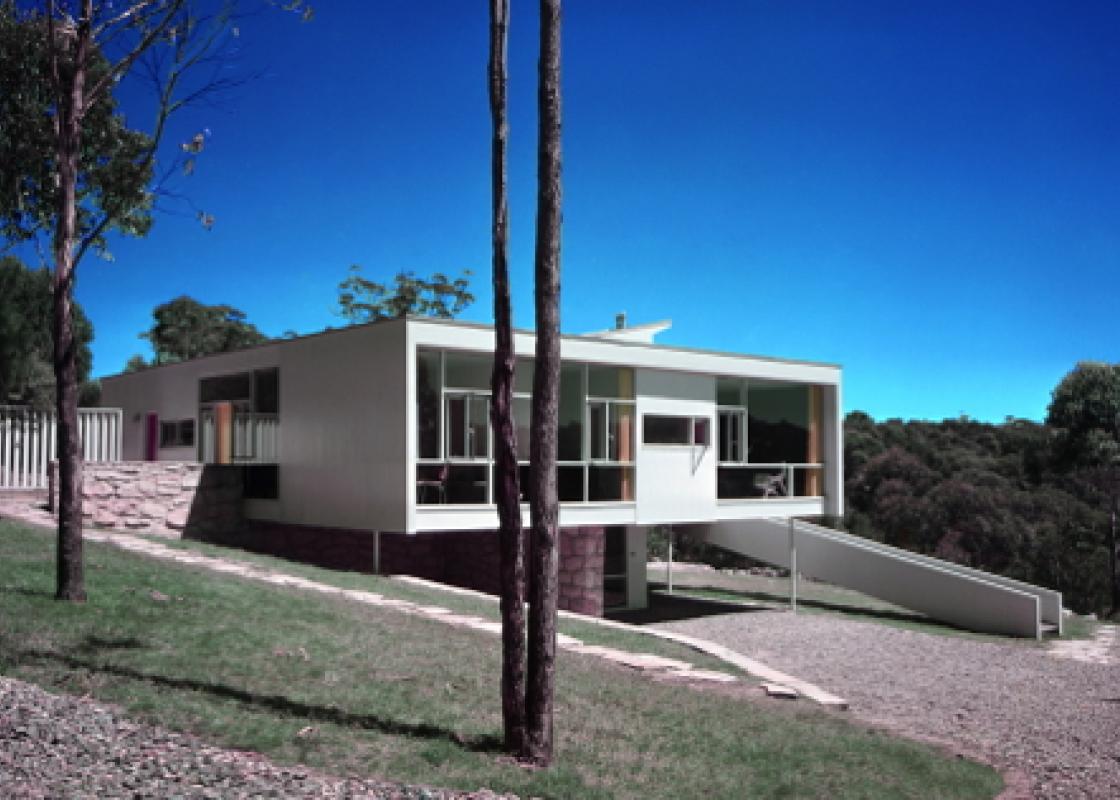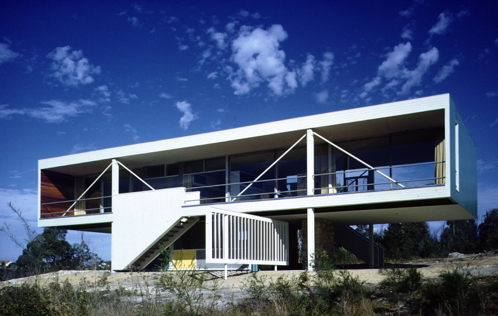
Julian Rose House, Wahroonga, Sydney, 1949-50, photo by Max Dupain, courtesy Harry Seidler & Associates
It is unusual for a retrospective exhibition to feel like a breath of fresh air. Yet the current exhibit at the Architecture Center on the work of Austrian-born architect Harry Seidler somehow manages to seem new in spite of its focus on works of 20th-century architecture. "Harry Seidler: Architecture, Art and Collaborative Design" (on view through May 31st) introduces us to an inspirational and wildly prolific architect who has largely gone unrecognized in the United States. Working almost exclusively in Australia, Seidler repeatedly collaborated with many leading contemporary artists and produced a body of work uniquely linked to the most important movements of the day in the fields of art and architecture. Credited with bringing Modernism to his adopted country of Australia, Seidler eventually expanded over the course of his 50+year career into multiple stylistic expressions that reflect the breadth of his own sources of inspiration.
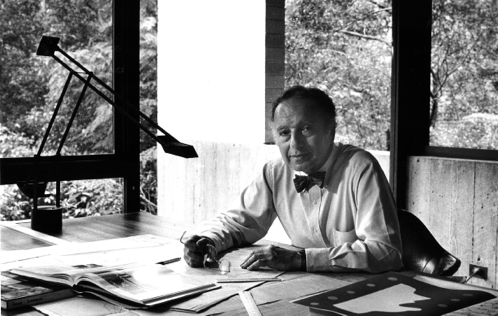
Harry Seidler at his House in Killara, Sydney, Photo by David Moore
Harry Seidler’s background and personal story is as remarkable as his architectural accomplishments. Born in Vienna in 1923 to a middle-class Jewish family, Seidler fled to England shortly after the Nazi occupation, only to then be sent to an internment camp in Quebec in 1941. Released on probation to study at the University of Manitoba, Seidler completed an architecture degree and in 1945 accepted a scholarship to the Harvard Graduate School of Design to study under Walter Gropius, one of the founding members of the Bauhaus and fathers of architectural Modernism. Over the course of three years Seidler completed classes and internships under such architectural and artistic heavyweights as Alvar Aalto, Marcel Breuer, Josef Albers, and Oscar Niemeyer. Ultimately lured to Australia at the invitation of his parents to design them a house, Seidler immigrated to Sydney in 1948 and promptly opened his own office. By the time he passed away in 2006, Seidler had overseen the design and construction of nearly 60 buildings ranging from private residences to large commercial properties, won a smattering of architectural awards in Australia, and collaborated closely with engineer Pier Luigi Nervi, photographer Max Dupain, and artists Josef Albers, Alexander Calder, Norman Carlberg, Sol LeWitt, Charles Perry, Frank Stella, and Lin Utzon. Visitors will recognize these names from many pieces included in the collections at the nearby Menil Collection and the MFAH.
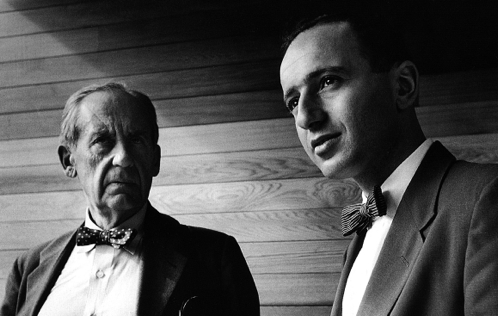
Walter Gropius and Seidler in Julian Rose House, Sydney, 1954, ©Max Dupain
All of this begs the question: Why has Harry Seidler fallen short of widespread international recognition? Curator Vladimir Belogolovsky has two theories. First, Australia was significantly more remote and difficult to visit when Seidler was at his most prolific, and as a result, Seidler’s work was published and visited by the international architecture community much less than it might otherwise have been in a more accessible country. Second, it wasn’t until the later part of his career that Seidler began to put forth really innovative ideas in his design work. For much of the first half of his career he was content just to spread the gospel of Modernism and focus his craft on tailoring the movement’s well-worn principles to the unique climate and site specifics of greater Sydney. When his collaborations with artists, and particularly with the engineering genius of Pier Luigi Nervi, started resulting in more innovative designs, perhaps his reputation as a talented but not regularly inventive architect had already been prematurely solidified.
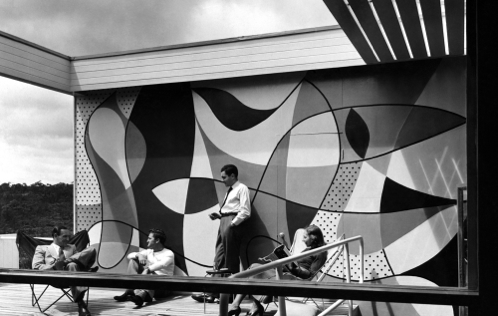
Rose Seidler House, Wahroonga, Sydney, Australia, 1948-50, photo by Marcel Seidler, courtesy Harry Seidler & Associates
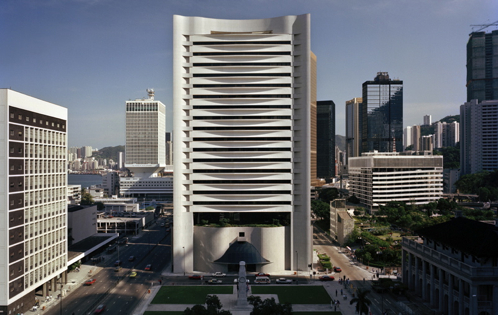
Hong Kong Club, 1980-84, photo by John Gollings, courtesy Harry Seidler & Associates
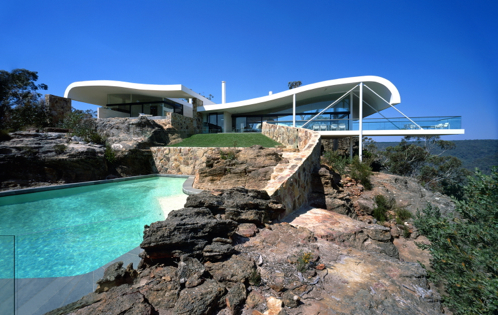
Berman House, Joadja, New South Wales, 1996-99, ©Eric Sierins
"Harry Seidler: Architecture, Art and Collaborative Design" uses multiple forms of media to highlight 15 of the architect’s strongest buildings, and specifically focuses on illustrating the degree to which Seidler drew on artistic inspiration to inform his own work. Exhibition curator Vladimir Belogolovsky explains, “He was so collaborative and so connected to great movements of the 20th century. It’s amazing that all these movements in history become connected through the story of one person.” Through correspondence, sketchbooks, and photography pulled from Seidler’s personal archives, the exhibition offers insight into the close, long-standing relationships Seidler built with his colleagues in the art world and how readily and directly he drew inspiration from their work. As suggested by the exhibition title, it is really Seidler’s working method and collaborations that serve as the focus of the show; indeed the traditional architectural documentation of each of the 15 featured projects is almost disappointingly thin, as the exhibit relies overwhelmingly on photographs and film to illustrate the final work instead of plan and section drawings. Fortunately Belogolovsky is in the process of writing a full monograph of the architect’s oeuvre, which will include more comprehensive documentation.
This exhibition gives viewers a chance to revisit the work of Seidler and learn from his particularly open-minded and ever-evolving approach to design. Belogolovsky notes how increasingly rare it is to see contemporary architects draw so much inspiration directly from artists. More often than not, he states, contemporary architecture is “calculated, technical, and performance-based,” often missing that original artistic image that sparks an idea and guides the development of the design. Reviewing Harry Seidler’s method as well as his finished work can serve as an important reminder of the value of an increasingly unusual approach to architectural innovation.
"Harry Seidler: Architecture, Art and Collaborative Design" is on view at the Architecture Center of Houston, 350 Capitol Street, through May 31st.


